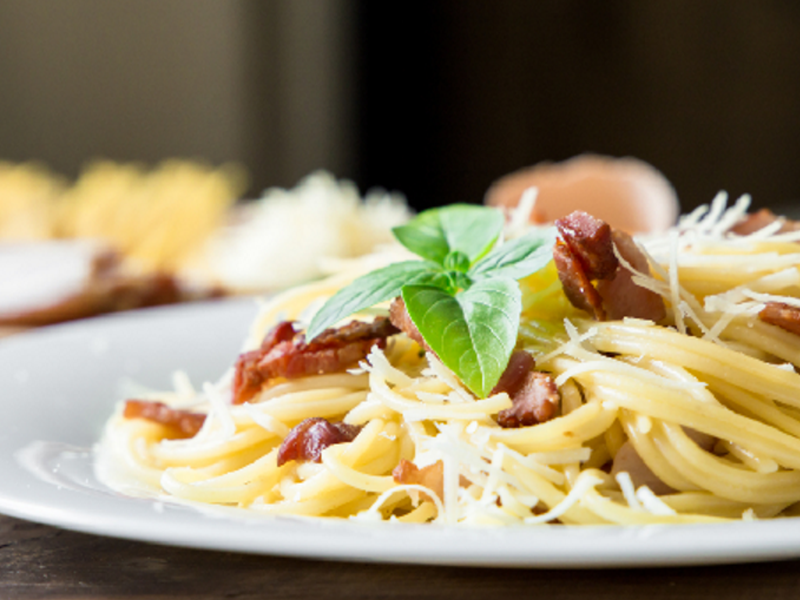While we love whipping up meals that put a fun twist on Italian cuisine, there are times when we crave the simplicity of tradition. On those occasions, we go back to our roots, following classic family recipes to make utterly authentic Italian food. When it comes to pasta, this is particularly true: there’s nothing fundamentally wrong with brightening up a pasta carbonara with a squeeze of lemon, but it goes against tradition (and most Italian cooks wouldn’t dream of it!). Here, we explore some of the most delicious Italian pasta dishes, and what you need to know to prepare them in traditional Italian style in your own kitchen.


Fettuccine Alfredo
This creamy, rich pasta dish is ubiquitous in Italian restaurants in the UK and US – but in a traditional Roman kitchen, it would never be made with cream. Fettuccine alfredo (also called fettuccine al burro in Italy) is actually supremely simple in its ingredients: a true Roman preparation calls for a hefty amount of butter and Parmigiano-Reggiano, a bit of salt and fresh fettuccine pasta – that’s it!
Pasta Bolognese
Spaghetti bolognese is the ultimate comfort food for many people, but it’s also a dish that often strays wildly from the authentic Italian method of cooking. For one thing, Bolognese is typically served with tagliatelle, not spaghetti! To make a proper Bolognese, you’ll need pancetta (available at any Italian delicatessen in London), onions, garlic, carrots, celery, minced beef, red wine, tomatoes, salt and pepper. Though you may try to lighten up the recipe using turkey mince or different types of veg, when you’re craving a true Bolognese, sticking with these ingredients is the way to go.
Spaghetti Carbonara
When you think of spaghetti carbonara, you probably imagine its deliciously cheesy, bacon-y flavour. However, in a traditional Italian carbonara, guanciale, a type of cured, aged pork cheek, is what imparts the dish’s meaty taste. Most recipes tend to use bacon, and some even call for cream, milk or butter, but traditional Italian preparations use just guanciale, eggs, Pecorino Romano, Parmigiano-Reggiano and black pepper to create a luscious sauce that clings to the al dente spaghetti beautifully.
Cacio e Pepe
Despite many modern recipes that call for heaps of butter or olive oil, the typical Roman recipe for Cacio e Pepe is basically as simple as its name. All you need for a big bowl of this moreish pasta is spaghetti, Pecorino Romano and black pepper. So what’s the trick to that impossibly creamy sauce? You toss the hot pasta with the cheese, pepper and a bit of the pasta’s cooking water until it all emulsifies into silky perfection.
Given the cliché of the Italian cook spending hours chopping, stirring and simmering in the kitchen, you may be surprised to discover just how uncomplicated these traditional methods are. More than anything, authentic Italian food relies on high-quality ingredients to deliver big flavour. That’s why Diforti sources the very best cheeses, olive oils, pastas and so much more in our Italian deli online – we want traditional Italian dishes to be accessible to everyone. The next time you’re craving comfort food, ditch the miles-long shopping list and focus on a few great ingredients. You’ll be tucking into a delightful Italian pasta dish in no time!

